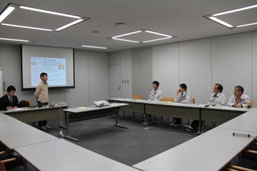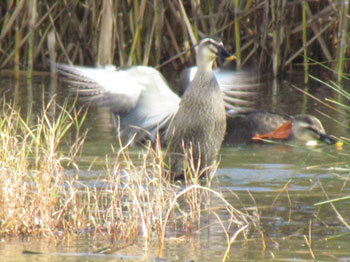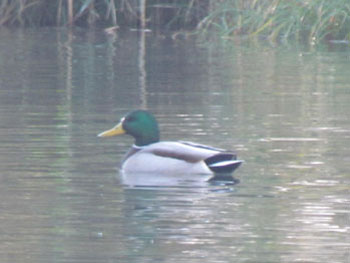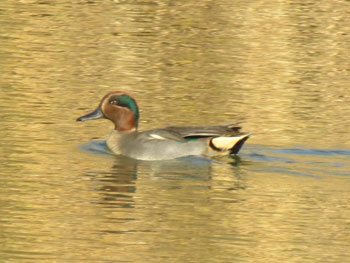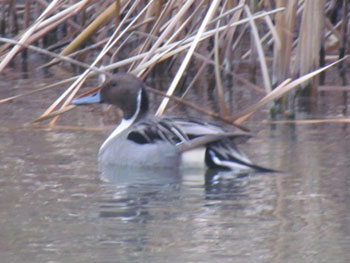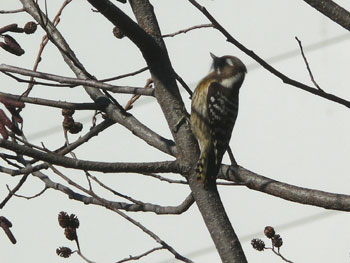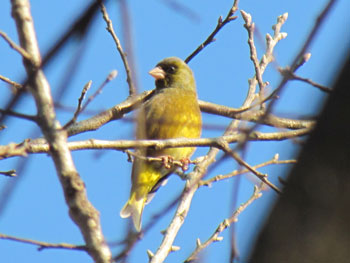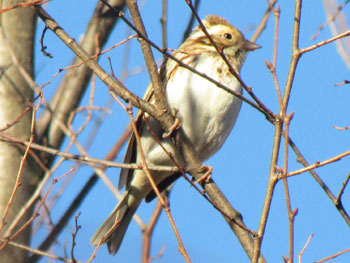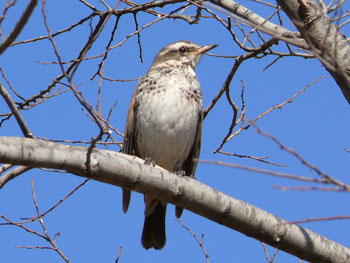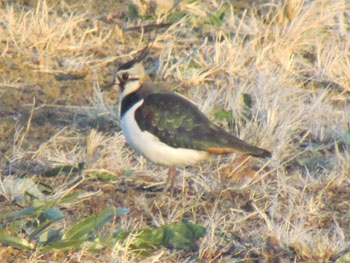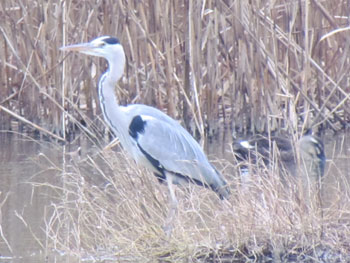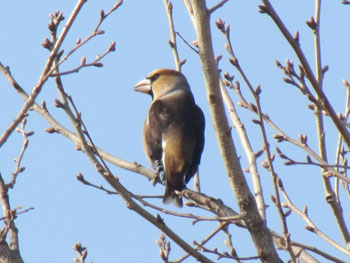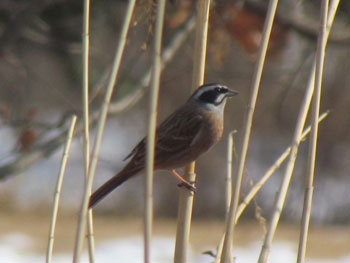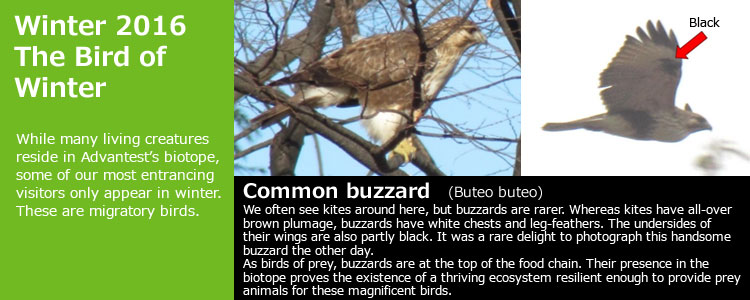
The Birds of Winter
Calendar of Bird Sightings
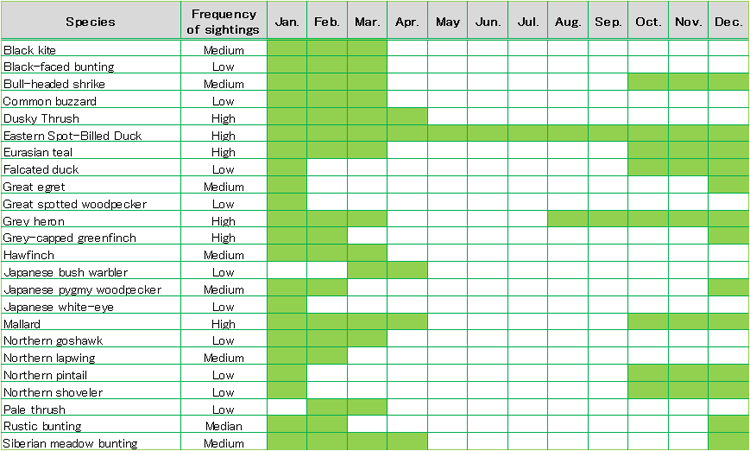
Some birds migrate seasonally, while others remain in the same habitat all year round. Even within species groupings, some birds migrate while others do not. There is still a great deal we don't understand about migration, despite the many types of surveys that have been tried, including tagging birds and fitting them with tiny transmitters.
The calendar above was put together based on data from our daily observations at the biotope. It includes stay-at-homes as well as birds of passage that migrate from Tohoku, Hokkaido, and as far away as Siberia. We are honored that these birds alight in our biotope to rest and gather their strength for the long journeys ahead of them come spring.
The Birds of Winter
Eastern Spot-Billed Duck (Anas zonorhyncha)
The lake in the biotope is alive with ducks at this season. If you watch quietly for long enough, you may see ducks challenging each other, swimming quietly by themselves away from the flock, and displaying their individuality in other ways.
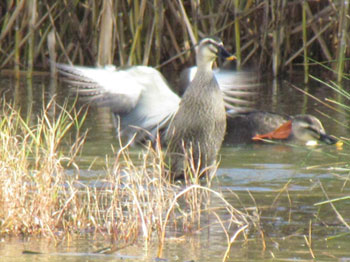
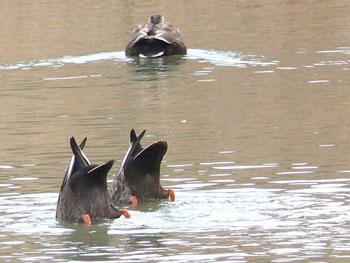
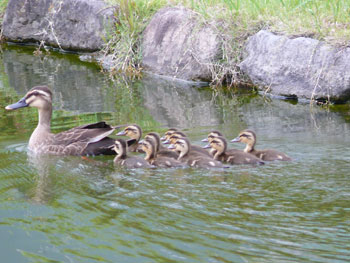
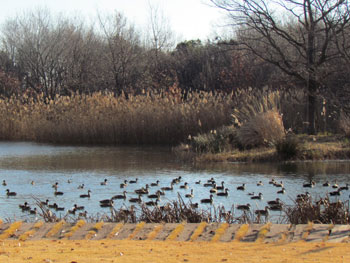
Mallard(Anas platyrhynchos)
The biotope's mallard population increases in winter. There are now about eight, including males and females. However, the mallard population of Saitama Prefecture, near the biotope, has been falling. The exact cause of the decline is unknown, but environmental pollution due to development in Siberia during the mallard's summer breeding season seems a probable culprit.
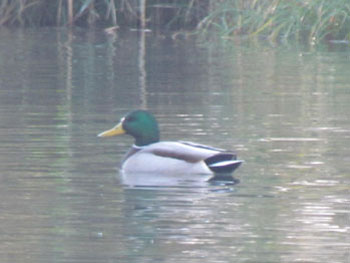
Male mallards are easy to identify by the green plumage on their heads.
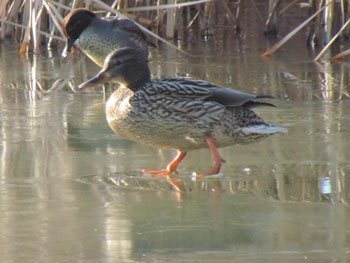
A female mallard walks on the frozen lake. Spot-billed ducks have yellow-tipped bills, but mallards have entirely yellow bills.
Eurasian teal (Anas crecca)
The Eurasian teal is very rare here. Most years, we see tens of individuals migrating through, but this year we only saw a few.
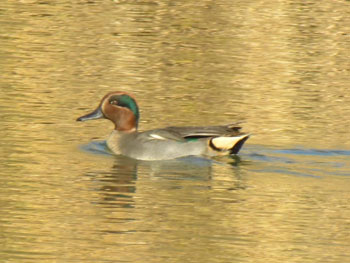
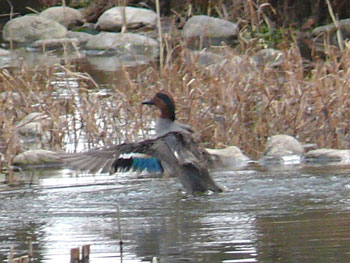
Northern pintail(Anas acuta)
The northern pintail is native to the temperate regions of Japan, including Gunma Prefecture. They are related to swans, which are often induced to stay in a given place by people who feed them. We do not feed the birds in the biotope. That may be why these northern pintails decline to take up residence here. We only saw them on a couple of days this winter.
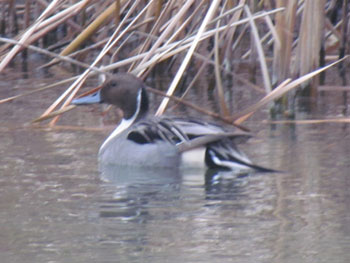
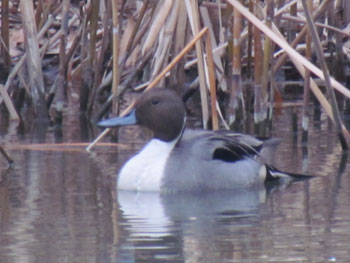
Japanese pygmy woodpecker(Dendrocopos kizuki)
Their distinctive cries of "Kee! Kee!" are memorable. Like its relative, the common woodpecker, the Japanese pygmy woodpecker makes holes in old trees to nest in. Although it is not classified as a migratory bird, some of them seem to travel to warmer regions in winter, and a few showed up at the biotope this season.
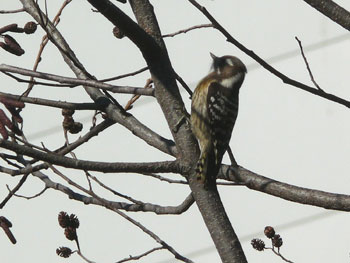
Grey-capped greenfinch(Chloris sinica)
In flight, its partly yellow wings are a beautiful sight. Grey-capped greenfinches travel in large flocks at this season.
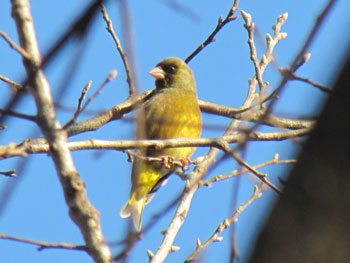
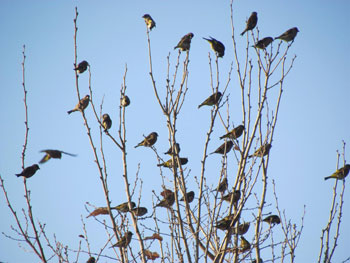
Rustic bunting(Emberiza rustica)
Its crest is distinctive. We had our first confirmed sighting of a rustic bunting this year in January, the same as last year.
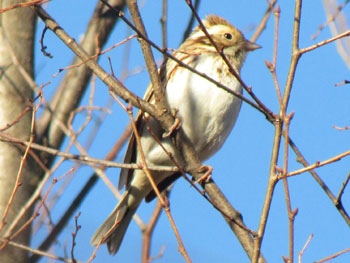
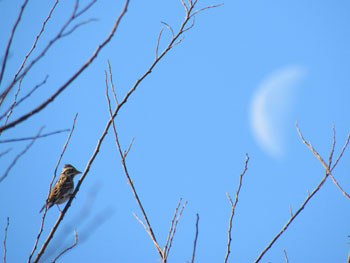
Dusky Thrush(Turolus naumanni)
We started seeing dusky thrushes in the biotope in December, and more arrived in January. They seem to be arriving a little faster this year.
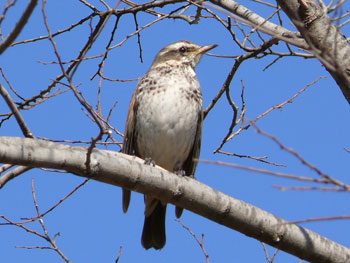
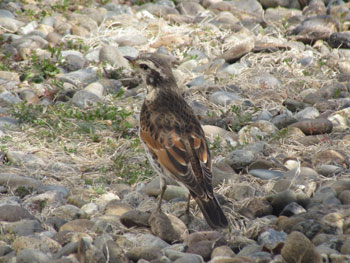
Northern lapwing(Vanellus vanellus)
When winter comes, northern lapwings show up in the bare ground outside the biotope. They have large crests and white breasts, and a cry that can sound like a cat or a seagull. Northern lapwings move in flocks in warm regions, and separate in colder areas, so we assume that for them, Gunma Prefecture, where our biotope is located, counts as a warm region. They are classified as a threatened species in Saitama and Tokyo, but there are many of them in the biotope, so these photographs were easy to get. The sight of migrating northern lapwings is a true sign of winter.
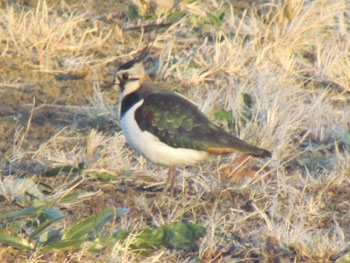
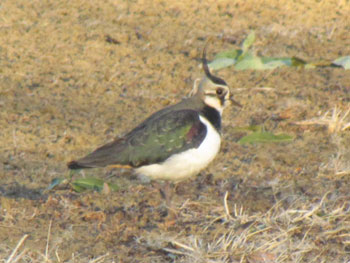
Grey heron(Ardea cinerea)
The largest of the heron family, the grey heron stands 90cm tall. It normally lives near water, and spears fish with its long beak. We used to see them only in winter, but in the summer of 2015 we saw grey herons building a nest in the grounds of the Gunma R&D Center, next to the biotope, and we've also spotted them in the thickets of the biotope.
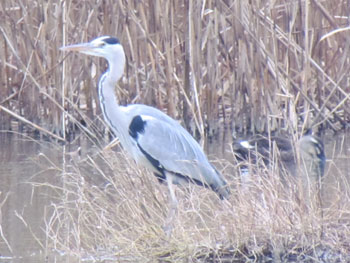
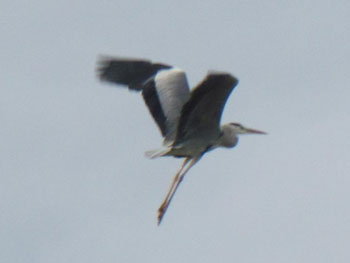
Hawfinch(Coccothraustes coccothraustes)
It arrives in autumn or winter and favors wooded areas. Its thick beak is distinctive. We don't see very many of them, as most of the countryside around the biotope is given over to fields, with few trees left standing.
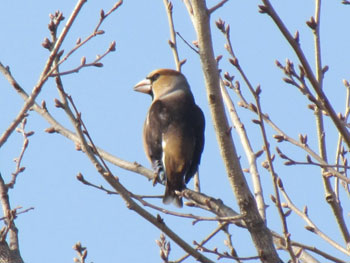
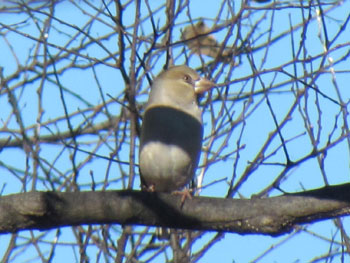
Siberian meadow bunting(Emberiza cioides)
Its white cheeks make it easy to identify. In the Kanto region, it is not a winter bird, but we only ever see Siberian meadow buntings in the biotope in winter. It shuns remote areas, seeming to favor places near humans.
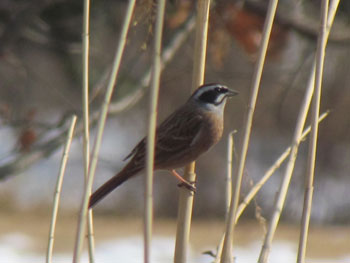
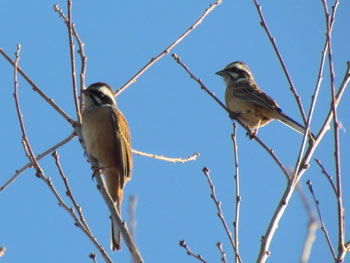
Topics : FY2015 Biotope Inspection Results Underline Biodiversity Contributions
On February 29th, 2016, the results of our FY2015 biotope inspection were announced at a meeting at the Gunma R&D center. Takuya Seki, a fourth-year student in the Gunma University biodiversity lab run by Shinichi Ishikawa, a lecturer in Social & Information Studies, presented research on the effects of global warming on plant growth and conservation methods. Among other findings, temperature measurements taken in the biotope between 2003 and 2015 demonstrate a 2.2℃ rise in average daily temperatures, reminding us that global warming is very serious.
At the meeting, Professor Ishikawa expressed the hope that Advantest, which established a biotope in 2001, and is currently active in conserving biodiversity in the Kanto plain, would "proactively share information on its conservation efforts, as befits the company's leading status in this arena."
